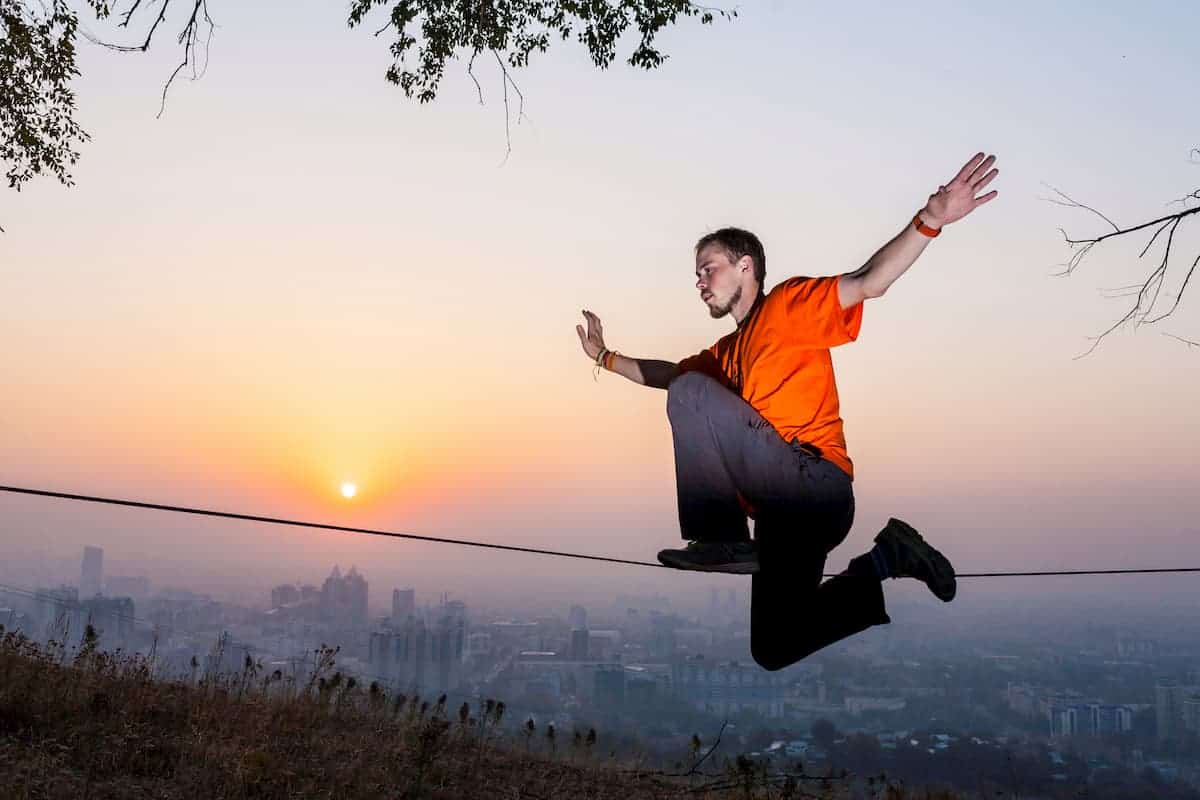

al, 2005) found that balance training increases vertical jump height. In 2005, a Canadian-Australian study (Kean et. Then we have a few more general studies on balance training, often used in conjunction with those above. I would argue that the time spent achieving this development by slacklining could be equally and more beneficially devoted to climbing. This correlation merely echoes many others that show that exercise and complex movement helps brain development. al, 2011) showed a correlation between slacklining and the growth of the hippocampus, the area of the brain associated with navigation and memory. To quote the study, “Unfortunately, slackline training did not result in significant improvements of static/dynamic postural control variables.”Ī 2011 study ( Hüfner et. In its extensive use in the promotion of the benefits of slacklining, no mention is ever made of the findings on balance training, so you can assume that’s a fail also. In other words, you’ll still be weak, but you’ll be more effective at being weak. It found no direct evidence that slacklining made strength training more effective, but the rate of muscular contractions increased. al, 2010) examined the effect of slacklining on balance and strength training. Here are a few oft quoted studies and their implications.Ī 2010 study by the International Journal of Sports Medicine ( Granacher et. The lack of correlation between slacklining and climbing skill is further demonstrated by a complete absence of scientific corroboration. However, these skills are in no way mirrored by the sport of climbing (I will concede defeat on this point as soon as someone establishes a route that includes a horizontal piece of tape webbing and requires a backflip).

It’s undeniable that slacklining requires a high degree of skill in order to simply walk the line, let alone perform acrobatic tricks. However, to say that Potter was an exceptional climber because of slacklining is a bit of a stretch. This “evidence” is anecdotal at best, supported largely by the promotion of slacklining by prominent climbing figures such as Dean Potter. The most frequent defence of slacklining as a pursuit is that it provides benefits that contribute directly to one’s climbing skill. As a trend, I can only hope it goes the way of the Tamagotchi. That’s because slacklining isn’t a sport it’s an image, a gimmick performed for the gaze of the public.

For a practice championed by the Dirtbag culture, you’d expect to see a lot of these homemade rigs kicking about… but you don’t. Better yet, you could construct one out of basic climbing webbing and some biners. You could easily make your own slackline using standard materials from any hardware store for less than $50. $500 for a piece of webbing and a ratchet. A quick search on google for slacklines will bring up kits for sale that range anywhere from $100 to $500. Right now, its novelty and apparent coolness is being exploited by shrewd businessmen. Slacklining is just another trend in a long list of cultural anomalies. Here’s what a few things would be called if we followed the lead of slackliners: For instance, it is the same as calling an assault rifle a non-lethal weapon simply because it doesn’t have the destructive force of an atom bomb. It implies a binary existence between the most extreme example and any subsequent examples. This is an utterly ridiculous naming convention. The prefix “slack” simply indicates that the rope or webbing is “less tight” than a tightrope, which essentially has no give whatsoever. As it turns out, I was wrong in that assumption. I assumed that there must be some legitimate reason for it to be labelled this way. I had to do some research to root out the origin of the confusing term “slacklining”. (Source: )With that out of the way, let me outline my concerns: It has a stupid name Slacklining is popular due to its simplicity and versatility.

Tension can be adjusted to suit the user, and different webbing can be used for a variety of tricks. Slacklines differ from tightwires and tightropes in that they are tensioned to create a dynamic line with stretch and bounce like a long and narrow trampoline. Slacklining resembles slack rope walking and tightrope walking as the line is held under tension. Slacklining refers to use of webbing tensioned between two anchor points to balance and walk.


 0 kommentar(er)
0 kommentar(er)
